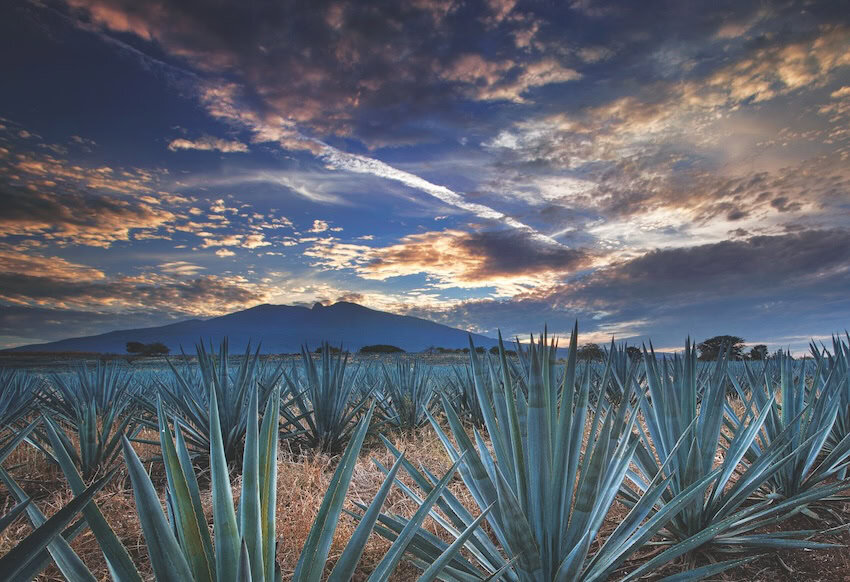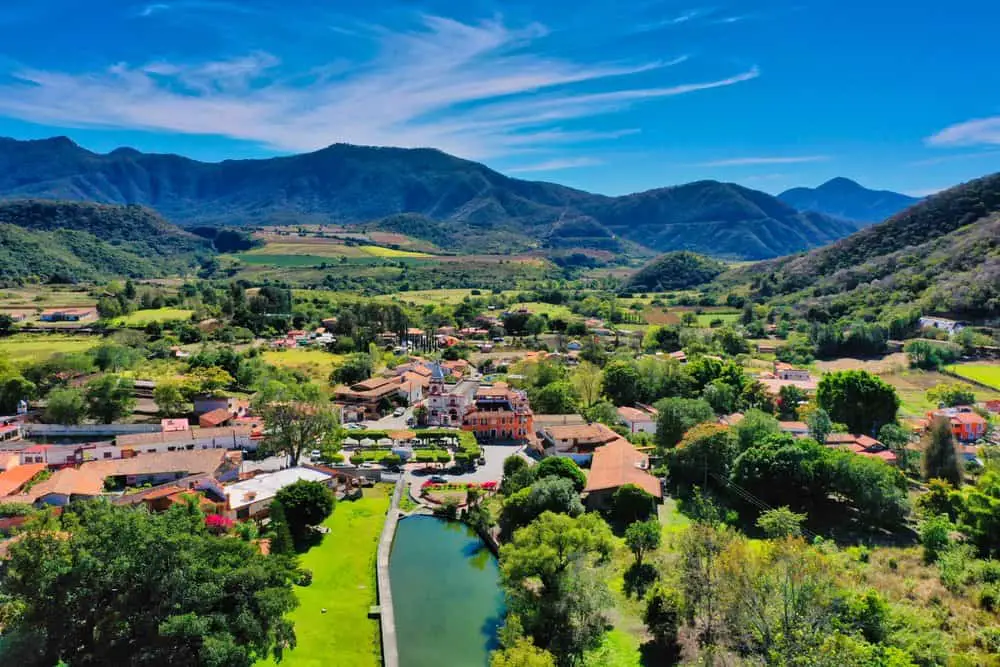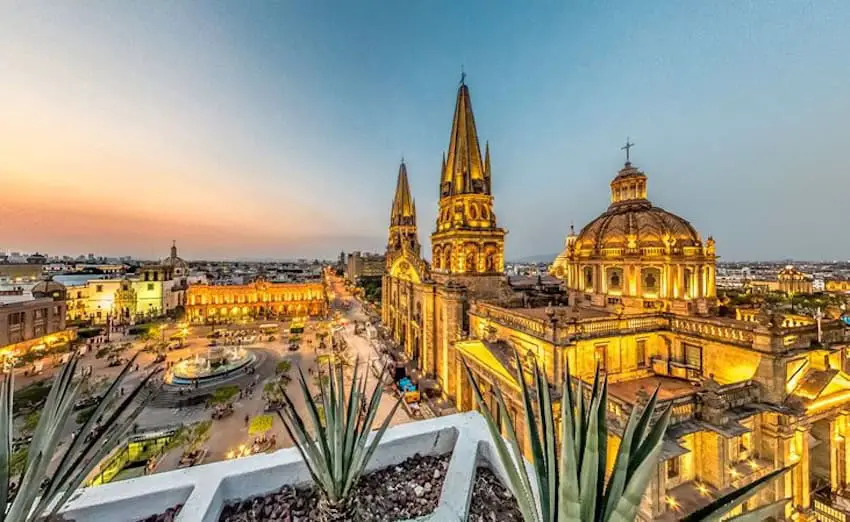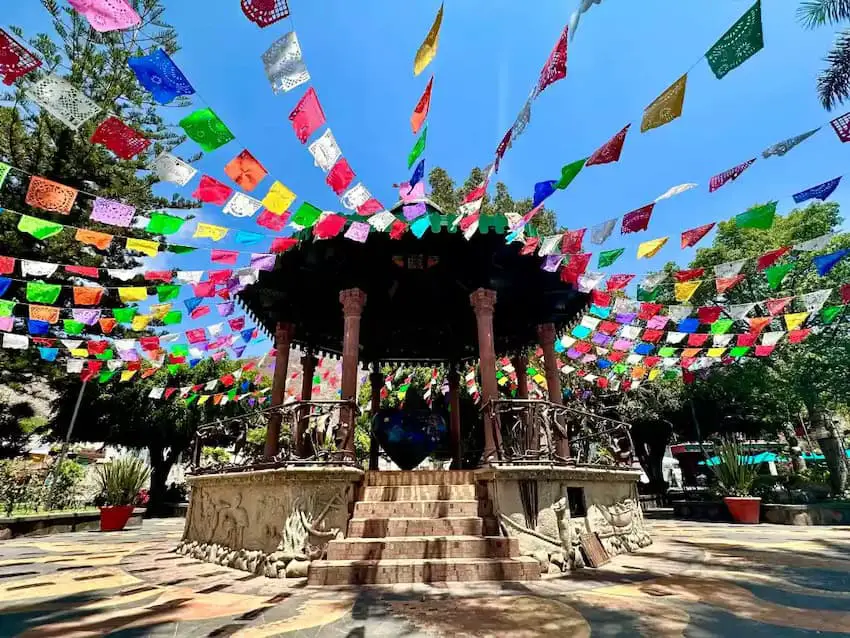MND Where to Live in Mexico 2024 Guide: Jalisco

With this instalment, the MND Where to Live in Mexico 2024 Guide: Jalisco, our extensive series, is nearing its mid-point. We’ve covered Mexico living in some diverse settings — both peninsulas (Baja and the Yucatan) along with cultural and coastal Oaxaca. This brings the total of Mexican states reviewed to five so far. It seems natural now to highlight Jalisco State, a cultural wellspring that has done more to define “Mexicanidad” than anywhere else. It’s also the place I’ve called home since 2015, exposing me to the State’s truths and myths when it comes to living here.
Our ratings highlight three very viable places to live — the quintessential beach vacation resort of Puerto Vallarta, fast-paced and forward leaning Guadalajara, and the de facto “birthplace” villages for overseas living for foreigners that are Lake Chapala. Having these three eclectic choices (not to mention twelve Pueblos Mágicos and three UNESCO World Heritage Sites) positions Jalisco as a kingpin for folks seriously seeking a viable place to live or retire in Mexico.

Jalisco’s relevance stems from attributes no other state can match. First up are iconic cultural traditions innately associated with Mexico’s national image: tequila, mariachis and charros. Tequila (yes, it’s really a place) and Mexico’s joyous and sorrowful musical gift to the world are both a part of living here. Salud to that! The Jalisco economy is a powerhouse in technology, cinema (Hollywood auteur Guillermo del Toro hails from here), manufacturing, automobile production, agriculture, foreign remittances, foreign direct investment, medical care, and tourism. Much of Jalisco oozes prosperity, and there is a sense of political independence from the rest of Mexico. As for the climate? Well, its highland plateau offers spring-like year round living. The seasonally pleasant seacoast meanwhile, affords some residents a “seagull” existence with winters spent on the coast and the rest of the year in the mountains!.
Jalisco is, at its core, cowboy country. Its rural, socially conservative identity even permeates the temperament of big city Guadalajara. Less-than-welcome realities are narco violence and an embrace of “machismo” in some societal and familial settings. There are nagging social ills (teen pregnancy, gun violence and drinking water contamination) to consider. Unbridled growth across all three of our featured places is also impacting quality of life for both Mexicans and expats alike.
But no one should bet against Jalisco’s future — economically or socially. Put down roots here and you’ll have a front row seat to both the hyper-local (municipal government ups and downs) and big picture of Jalisco’s unbridled future.
Puerto Vallarta


Let’s start where millions of Americans embrace Jalisco, Puerto Vallarta. People fall hard for PV, many having a natural vacation connection that stretches back decades. As beach resorts go, it’s the place that comes closest to being all things to all vacationers in all of Mexico. With a population of 224,000, PV lost its fishing village virginity decades ago. But it’s still Mexico’s most picturesque coastal city.
Hugging the shore of Mexico’s largest natural bay, the epic Bay of Banderas, PV’s Malecon boardwalk is a top five Mexico experience at all hours of the day. The street food to gourmet dining selection is unsurpassed. Aquatic and inland eco-adventure stuff to do is also hard to beat. There’s also a heightened sense of place in the city’s architecture, color palate and vestiges of once-isolated village life in the city’s riverside downtown core, all of which feel very “Jalisco.” It’s all quite remarkable, really. In defiance of the high-rise tower invasion in the city’s Zona Romantica, neighborly relations and Mexican familial sensibilities prevail. Monumental change has been lurking for decades, but the PV “centro” is still a special place to live and visit.
Living here comes with a snappy urban resort pace mixed with pockets of residential and neighborhood community connections. It’s Mexico’s most LGBTQ-accepting destination and has a lively performing arts/live entertainment scene. An hour south is Jalisco’s emerging Costalegre, some of Pacific Mexico’s most beautiful, undeveloped coast.
Guadalajara


“Guadalajara, Guadalajara…” so goes the popular mariachi song. With a population topping 5 million, this is Mexico’s second largest urban area with some 1,500 named neighborhoods. It stretches across a sloped plain that’s truncated in the north by a gapping gorge. Guadalajara is a contradiction when it comes to understanding its personality. It’s socially conservative, and stridently original in the visual and performing arts. It’s got more skyscrapers under construction than any city in Mexico, yet is home to cozy, leafy neighborhoods filled with parks, trees, and color. Guadalajara’s universities attract hundreds of foreign medical students. Paradoxically, there are surprisingly few museums to frequent.
I guess, “who needs stuffy museums,” when “tapatios” can rejoice at outdoors events and venues that host Mexico’s most diverse and robust monthly happenings: film, fashion, tequila (of course), microbreweries, sports — most notably soccer and baseball, but motorsport, athletics and even rugby have long traditions in the city — music, dance, books (the world’s second largest book fair), along with secular/religious happenings in stadiums, parks, expo centers, and historic buildings across the city. One online calendar of events highlights the 12 months of artsy things to do in Guadalajara.
Traffic snarls are part of everyday living, but so is an eclectic dining and bar scene, an American Society of Jalisco to help you get settled, and more live music than you could possibly take in. Mobility challenges can be mitigated by using bike lanes or the city’s excellent 18 station, 22 km-long metro line, crossing the city from northwest to southeast. Other lines are under construction. Mexico’s second largest airport is here, serving over 60 locations, non-stops to Europe, Central and South America).
Lake Chapala


If this is all too much stimulation, 45 minutes south is one of Mexico’s most iconic and original expatriate hang-outs. If lakeside village living is your calling, Lake Chapala might be your village in the sun. Lake Chapala living is clustered along the lake’s northwest shore. Across two municipalities, Chapala and Jocotepec, no one really knows how many foreign-born residents call this place home.
The numbers swell from October to March, exacerbating some automobile traffic challenges, rising rental costs, and the area’s water shortage. These growth concerns come with village and small-town settings (Chapala, San Antonio, Ajijic, San Juan Cosala, Jocotepec) inhabited by retirees from over 40 countries! The demographic is certainly “older,” but that doesn’t necessitate a nap on the hammock of things to keep you busy. Three English-language theater companies, a symphony, a community choir, the renowned Lake Chapala Society campus, Mexico’s longest standing weekly English lecture series, (Open Circle, and dozens of non-profit volunteer opportunities are relished in Mexico’s best year-round climate). Residents feel very safe being out at all hours. There is near zero homelessness.
The first pioneering foreigners living here started coming in the 1940’s. Lake Chapala boasts a very hybrid Mexico-a-la-Expat lifestyle. Foreigners and Mexicans live here in mostly symbiotic ways, with gentrification offset by a balanced commitment to helping the area thrive. If you want to embrace a social improvement cause, there’s a community of like-minded folk to connect with.
Yes, the lake itself is facing ecological challenges. But few living here connect with the lake beyond gazing at its majesty, backed by verdant mountains rising three thousand feet above the lake-facing towns. (link to my article?). Will growth continue to eat away Lake Chapala’s mountainscape and drain over-taxed water wells? It’s a fair criticism.
Jalisco State is home to resort, urban and village settings. It’s pretty unbeatable for just about any overseas living aspiration. Or combine all three and show your friends and family up north a Mexico living reality they can barely imagine.
The ratings
A full breakdown of our rating system can be found here.
![]()
![]()
What did we get right? What do you disagree with? Let us know in the comments.
You can see more of our Where to Live in Mexico 2024 series here, including ratings for Yucatán, Oaxaca, Quintana Roo and the Baja California peninsula.
Author Greg Custer lives in Mexico. He’s worked for over 40 years in international tourism, educating travel advisors around the world about Mexico and other Latin American destinations. He helps folks explore Mexico for living at www.mexicoforliving.com.
Source: Mexico News Daily

